These amazing fish stand out from other fish species for the way they look so strikingly that it seems they dived into the World ocean from another planet. Lampridiomorpha is a superorder of bony fishes inhabiting the sea water. It comprises only one order of Lampriformes.

(A postage stamp Taiwan 2012 Deep Sea Creatures stamp. Regalecus glesne)
In its turn, the Lampriformes order consists of two suborders, including Bathysomi and Taeniosomi. Representatives of these suborders are utterly unlike each other. So, most people wonder why they are considered to be relatives. However, ichthyologists state that this is true without going into scientific details.
Most fish of the order have a common adherence to the pelagic way of life; these sea creatures occur at depths of 100–1,000 meters, being rarely found near the bottom. Moreover, the Lampriformes fish are narrow, although some of them have a roundish body shape, while others are like a strip.
The size range is impressive as well. A fish with a weird name spinyfin velifer (Metavelifer multiradiatus) can be 28 centimeters long. It inhabits the Indian and Pacific Oceans. The longest of all living bony fishes, the Pacific oarfish or king of herring (Regalecus glesne), which occasionally occurs in the Adriatic Sea, can be 17 meters long.
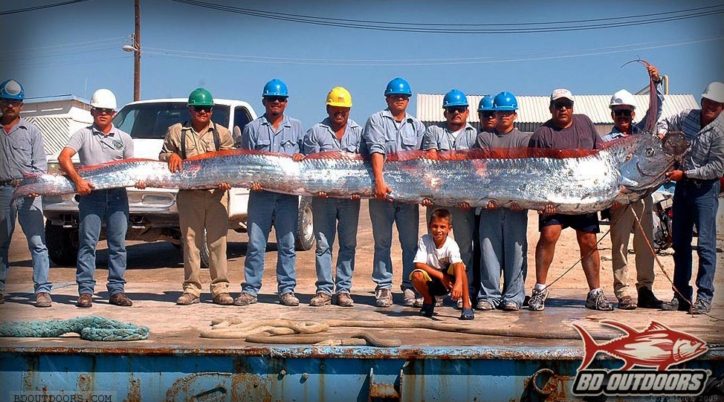
(Pacific oarfish, or king of herring. Photo by © bdoutdoors.com)
The Lampriformes order includes 12 genera and about 20 species. Representatives of 5 families inhabit the Adriatic.
Opah, or moonfish (Lampris guttatus).
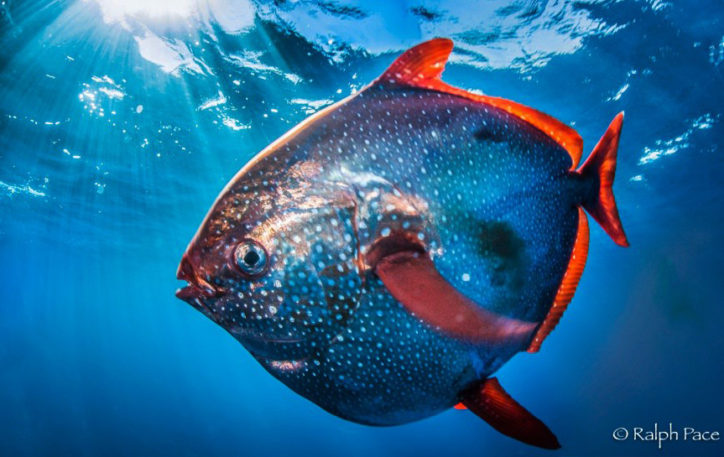
(Opah. Photo by © Ralph Pace. swfsc.noaa.gov)
It is a bathypelagic species. It inhabits the depths of 100-500 meters. It is usually up to 370 meters long. The maximum recorded length is 200 cm; specimens up to 120 cm are more common. The maximum weight is 270 kilograms. It’s an individual predator. It feeds on fish and invertebrates, mainly squid. It’s a rare inhabitant of the Adriatic.
Crested oarfish (Lophotus lacepede).
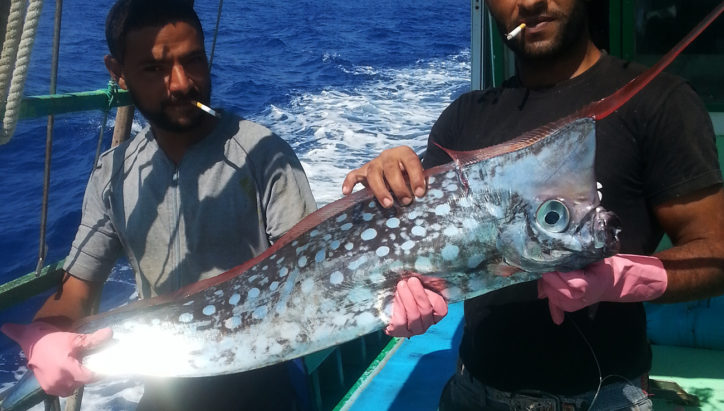
(Crested oarfish. Photo by © K. Konnaris. fishbase.org)
It is a bathypelagic species. It inhabits the depths of up to 92 meters. The maximum length is 200 cm, specimens up to 100 cm are more common. It’s an individual predator. It feeds on fish and squid. Several occurrences of the fish were recorded in the Adriatic Sea.
Giant oarfish, or king of herrings (Regalecus glesne).
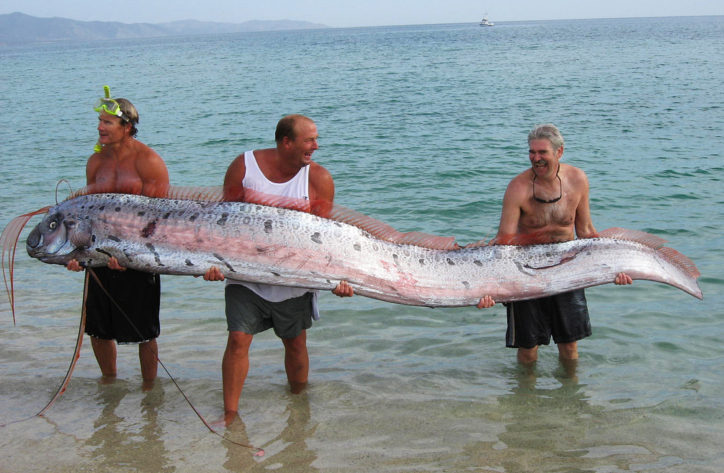
(King of herrings. Photo by © marshcv. flickr.com/photos/17299082@N05)
It is a pelagic species. It inhabits the depths of 20-1,000 meters. The maximum recorded length is 17 meters; specimens up to 300 cm long are more common. The maximum weight is 272 kilograms. It feeds on crustaceans, small fish and squid. Several occurrences of the fish were recorded in the southern part of the Adriatic Sea.
Mediterranean dealfish (Trachipterus trachypterus).
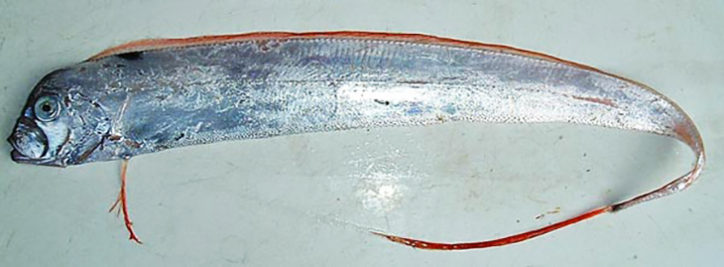
(Mediterranean dealfish. Photo by © zukan.com)
It is a bathypelagic species. It inhabits the depths of 100-600 meters. The maximum recorded length is 300 cm. It feeds on squid and fish. It is a rare inhabitant of the Adriatic Sea.
Scalloped ribbonfish (Zu cristatus).
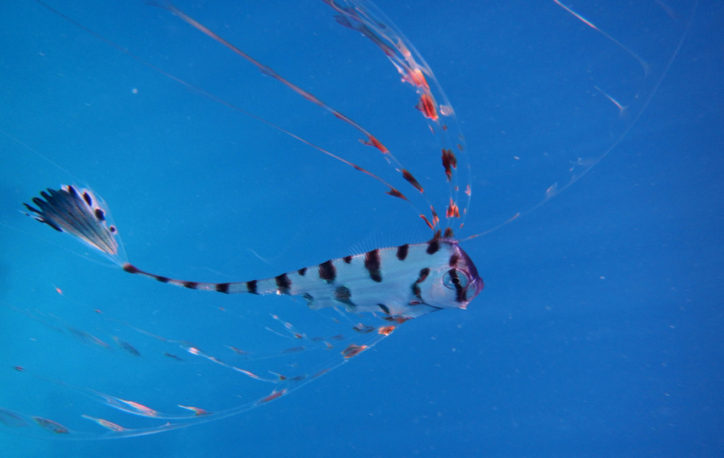
(Scalloped ribbonfish. Photo by © whatsthatfish.com)
It is a bathypelagic species. It inhabits the depths of up to 90 meters. The maximum recorded length is 118 cm. It feeds on small fish and squid. Several occurrences of the fish were recorded in the Adriatic Sea.